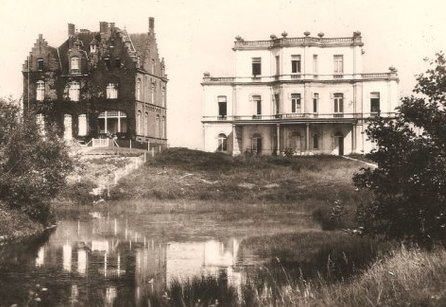THE ROYAL VILLAS AT LA PANNE
The Royal villas at La Panne where the private residences of the Belgian royal family from 1914 till 1918
ORIGINS
villa Portier
The property was given from the French Emporer Napoleon III to General Dubois.
Pierre-Louis-Antoine Bortier's "Le Magnifique" (1770-Londen 1830) later bought the 650 ha dunes and villa for 12.000 guldens. He later went to London for his textile business and died there. His nephew Pierre-Louis-Antoine Bortier (1805-1879) was his heir, and after his death in 1879, his sister Emilie-Sophie Bortier (1802-1891) inherited the villa. Emilie-Sophie Bortier, was married with Joseph-Nicolas-Gérard Calmeyn (1780-1838), "conseiller à la cour impériale à Bruxelles". From there, the estate came to their son, Pierre-Louis Calmeyn, who married Flore Rey. For some time, Madame du Vigneaud took up residence for a couple of years with her two daughters. One of them was Miss Hennessy.
VIlla de Terschueren alias Villa Albert I
This villa was built by Adile-Jacques Mulle de der Schueren ( 1857- 1932) in 1914. Ter Schueen -was married in 1884 to Louise-Marie Calmeyn (1859-1932), the daughter of Pierre-Louis Calmeyn en Flore Rey. Together they had their son, later Baron Louis Mulle de der Schueren (1887-1957), who later married Marie-Louise Solvyns.
Villa Masks
He was built by Paul Masks (1855), who was a Belgian diplomat and the son of Elise Calmeyn (1828-1899) and Charles Maskens (1807-1864). He later married Madeline Marlon.
Villa 'St. Joseph'
This villa was built around 1910 by baron Louis Mulle de ter Schueren (1887-1957), who also owned the estate de Terschueren. In 1911, fled sisters from the Dominikanessen from Portugal occupied the villa and started on Queen Elisabeth's request a school for orphans and refugees at the beginning of World War I. The princes Leopold and Charles, together with Princes Marie-José, were also educated here Dutch, during their stay in La Panne, by the teacher Camiel Noterdaeme (1884-1963).
Camiel Noterdaeme was a teacher in the St. Aloysiuscollege and was asked one afternoon to come to Mayor M. D'arripe. Here he was introduced to H. Ingenbleek, the private secretary of King Albert and was asked to teach Queen Elisabeth the Dutch language. The queen learned even the West-Flemish dialect to communicate better with the wounded soldiers. In 1939, Mr Noterdaeme asked that his daughter, Godelieve, would like to serve at the Royal Household. She accepted the duty and became the private chamber girl of prinses Joséphine Charlotte.
After the war, the sisters took up residence in the villa St Vincent' at La Panne.
WAR TIME
Queen Elisabeth was the first to arrive in La Panne, on the 15th of October 1914, while her husband King Albert, stayed in Veurne until the 26th of October 1914. She presumed that she only would stay for a brief moment here and wrote:
“We are drawn like cuckoo young in someone else' nest"
The villa was the property of the family Maskens, who was fled to France. There was no fluent water, no central heating and for a long time, the only lighting was provided from carbide lamps.
King Albert stated the following about his new residence in La Panne:
"They want to kick me out of Belgium, were my Grandfather has entered it"
Queen Elisabeth will return the Royal Villas in World War II from 14th May till 24th May 1940 and was accompanied with Hendrik de Man, Chairman of the Belgian labor party, Duchess Louise Carton De Wiart, Will De Grunne and two officers of the Belgian Gendarmerie.
VILLA MASKENS
Villa Maskens, was the property of Adile-Jacques Mulle de ter Schueren and was renamed in the First World War as Villa Albert I.
VILLA BORTIER
This villa was build by Pieter Bortier from Diksmuide.
The villa Bortier was situated on the sea bank. During the first world war the villa was occupied by the Royal guard and it was also the location of the office of Jules Ingelbeek, secretary of King Albert I.
During the second world war, the villa was occupied as a German H.Q. By the end of 1944, the villa was blown up by the Germans, before there retreat.





